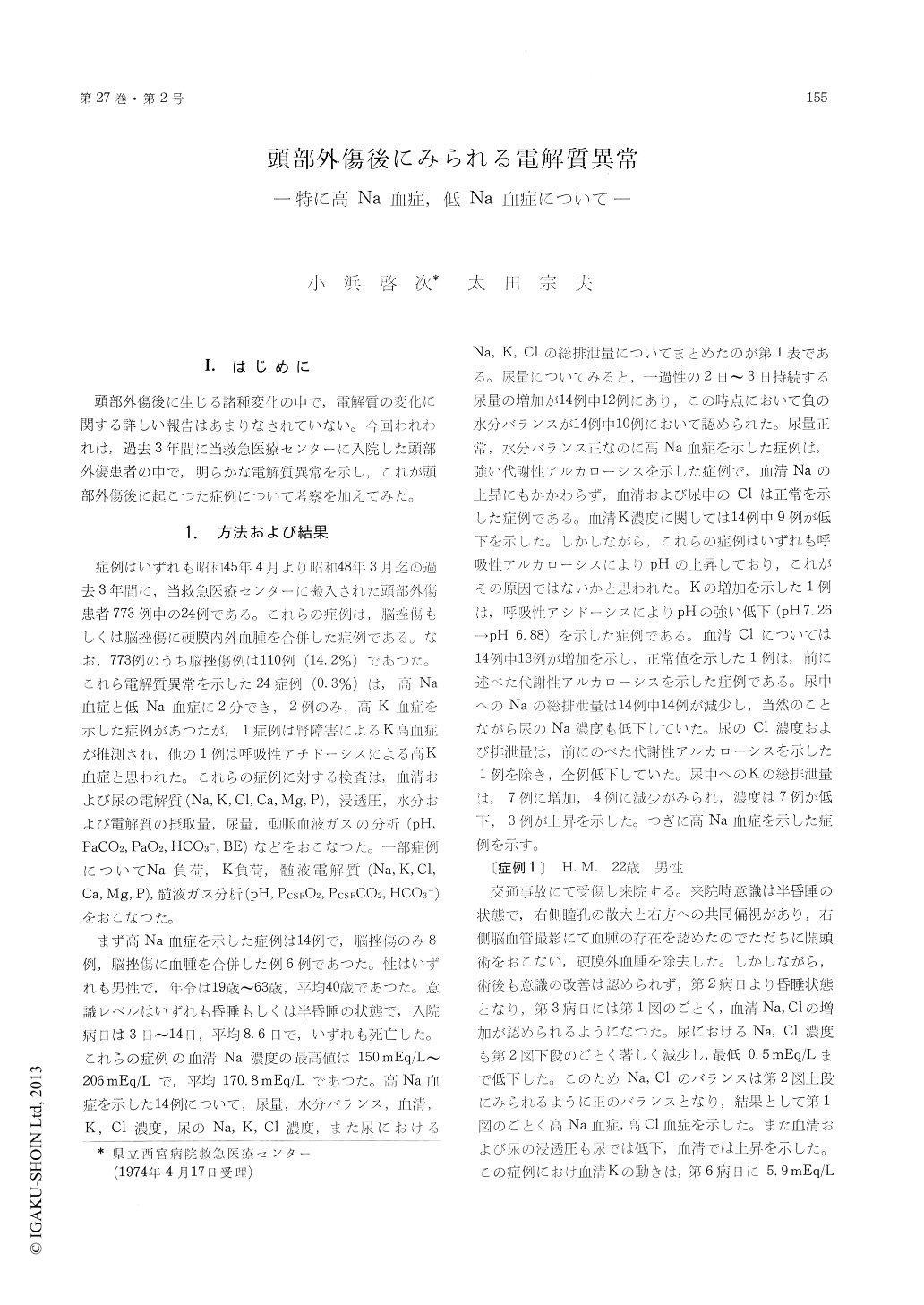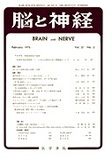Japanese
English
- 有料閲覧
- Abstract 文献概要
- 1ページ目 Look Inside
I.はじめに
頭部外傷後に生じる諸種変化の中で,電解質の変化に関する詳しい報告はあまりなされていない。今回われわれは,過去3年間に当救急医療センターに入院した頭部外傷患者の中で,明らかな電解質異常を示し,これが頭部外傷後に起こつた症例について考察を加えてみた。
During the past three years, 773 head-injured patients were admitted to the Nishinomiya Emer-gency Medical Center. Of these cases, 24 patients showed abnormal serum electrolyte changes which could be divided to hypernatremia or hyponatremia. Other serum electrolytes such as potassium, calcium, magnecium and phosphorous did not show any change which related to the injury, but serum chloride showed the same changes as recognized in sodium. Hypernatremia was seen in the 14 patients of cerebral contusion or cerebral contusion with hematoma and emerged after 2 or 3 days of admis-sion following temporary polyuria. Their states of consciousness were coma or semicoma. Maximum concentration of serum sodium was ranged from 150 to 206 mEq/L (average 170.8 mEq/L). Urine concentration of sodium decreased conversely, and sodium balance became positive. All of these patients died within 4 to 14 days (average 8.6 days) after admission. The other 10 patients with hypo-natremia had the same cerebral damage with the hypernatremic patients, but the states of conscious-ness were stupor or somnolence. Hyponatremia was noticed after 7 to 34 days of admission and minimum concentration of serum sodium was ranged from 108 to 124 mEq/L (average 114 mEq/L). Urine concentration of sodium increased conversely, and sodium balance became negative. The mortalityrate of these patients was 60 percent. In this study, hypernatremic patients showed almost the same courses and disturbance of osmoreceptor-ADH system was suspected. Otherwise, in the hypo-natremic patients, water and sodium balance showed variable results and SIADH might be a cause, but osmorecptor, volume receptor, ADH, aldosterone and other factors seemed to complicate the results.

Copyright © 1975, Igaku-Shoin Ltd. All rights reserved.


